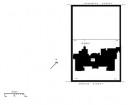STONE MILEPOSTS - WARNNAMBOOL-CARAMUT ROAD
WARRNAMBOOL-CARAMUT ROAD CARAMUT, WOOLSTHORPE AND MINJAH, MOYNE SHIRE
-
Add to tour
You must log in to do that.
-
Share
-
Shortlist place
You must log in to do that.
- Download report
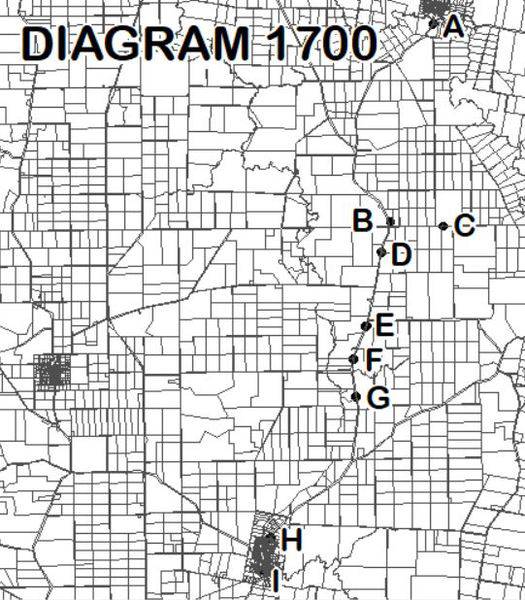

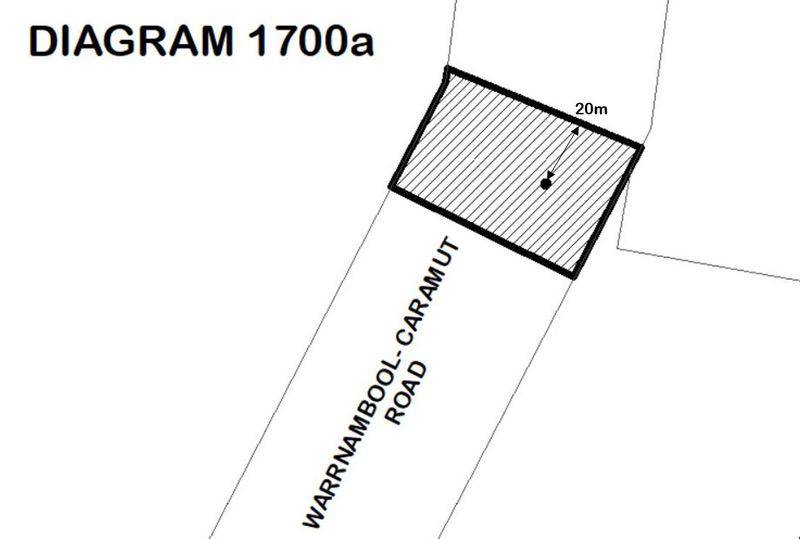
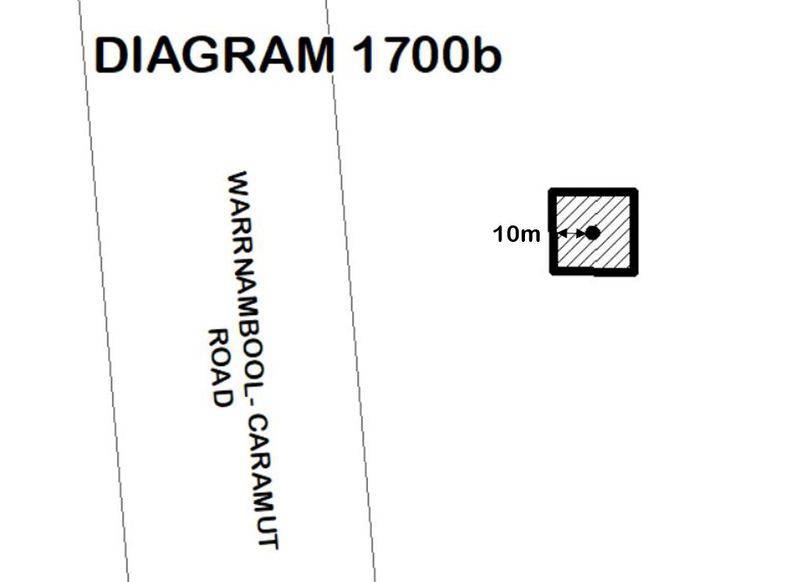
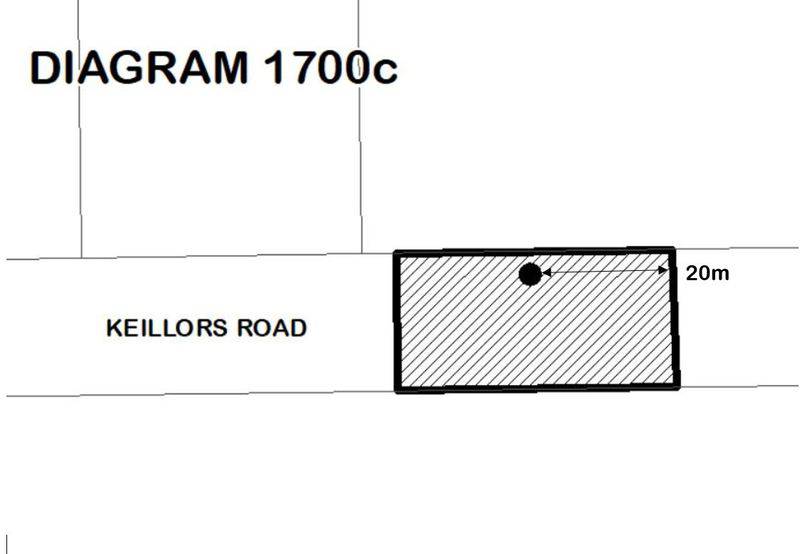
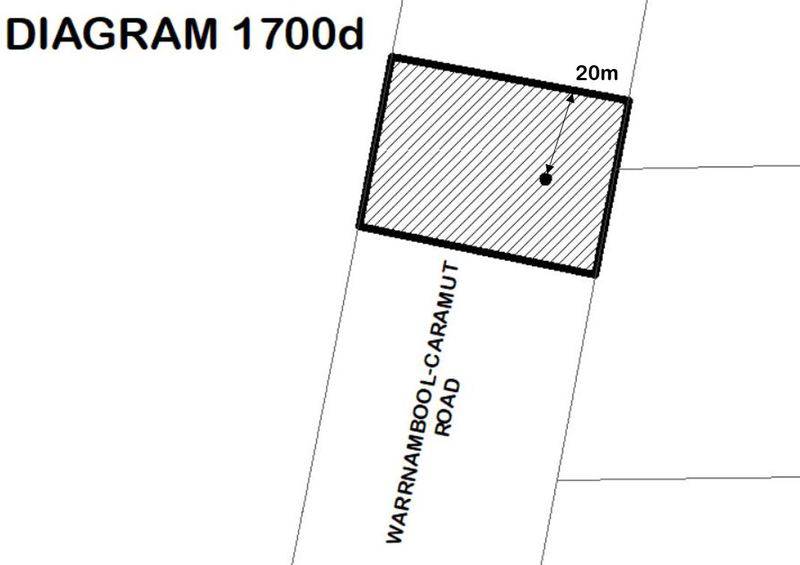
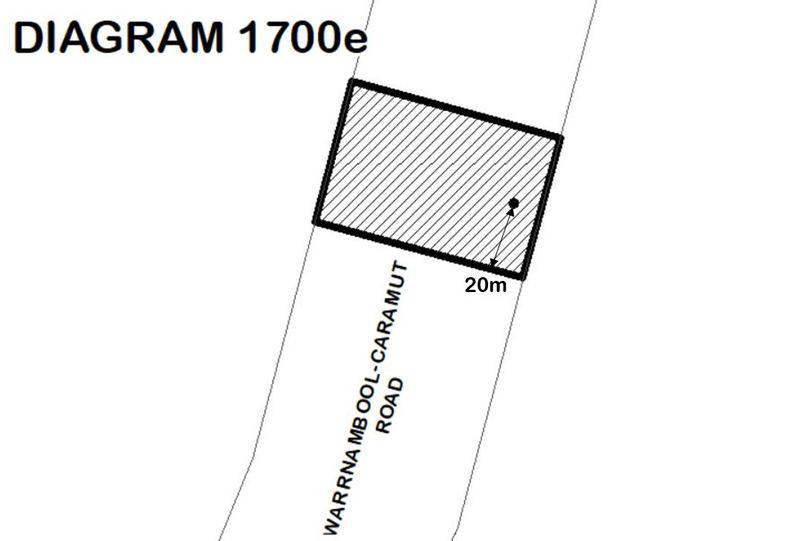
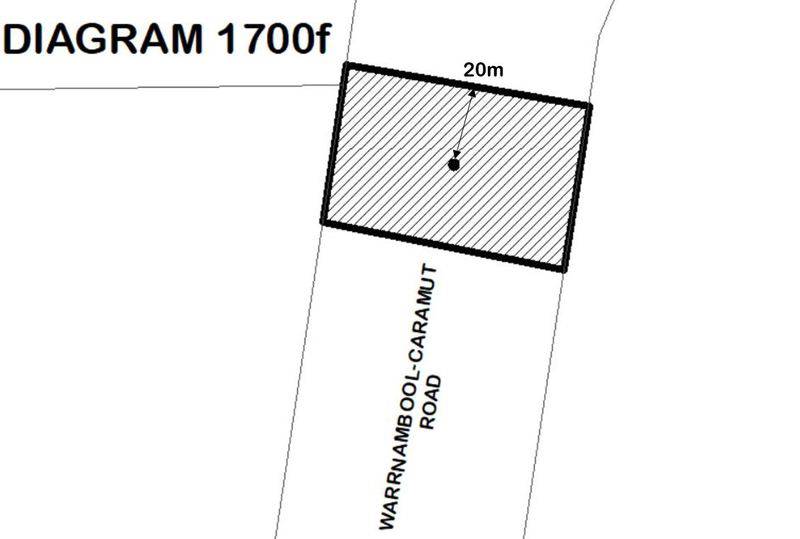
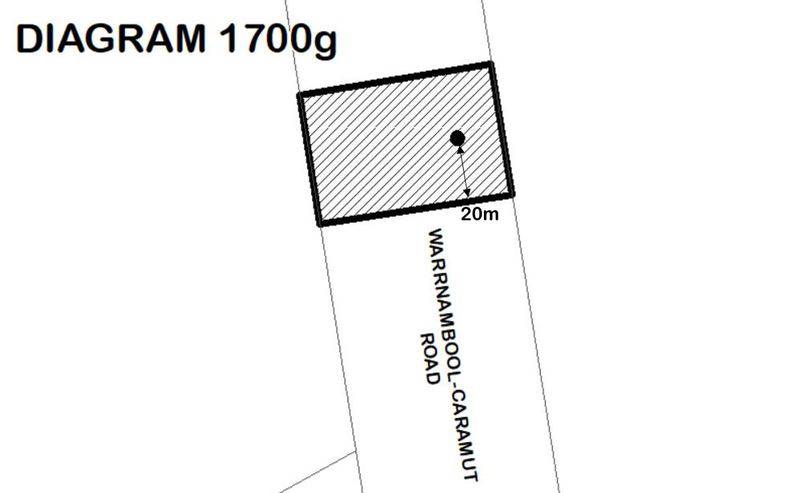
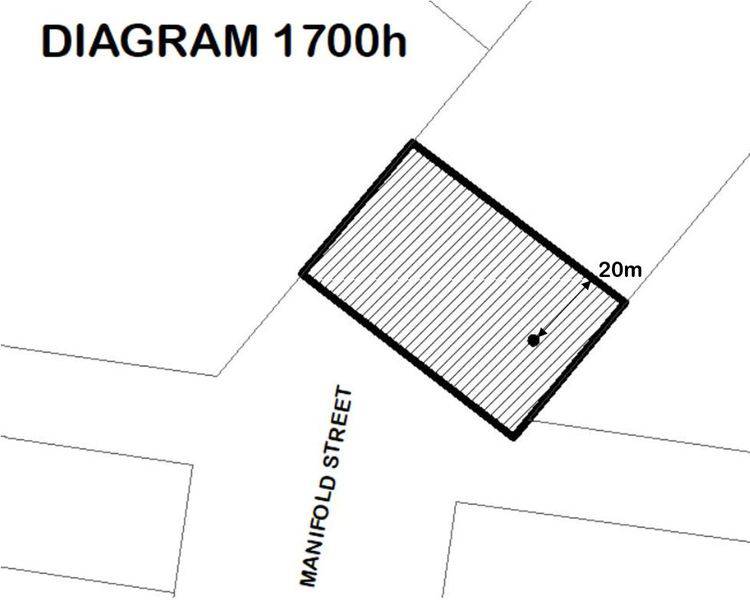
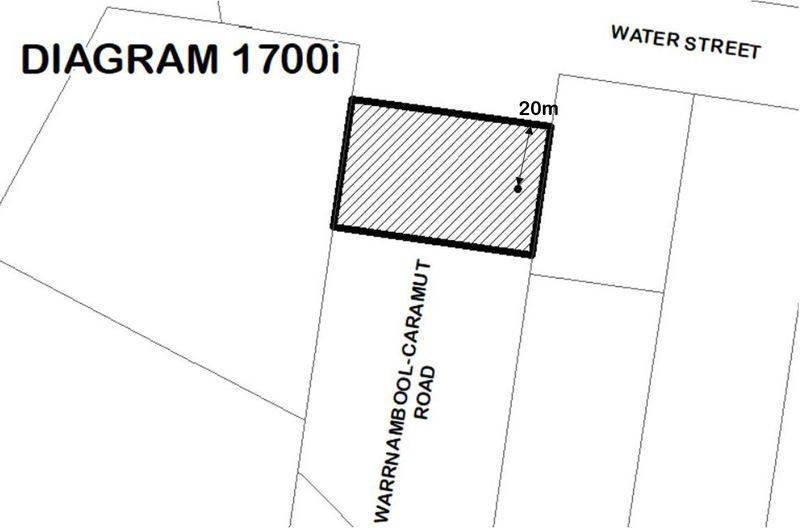
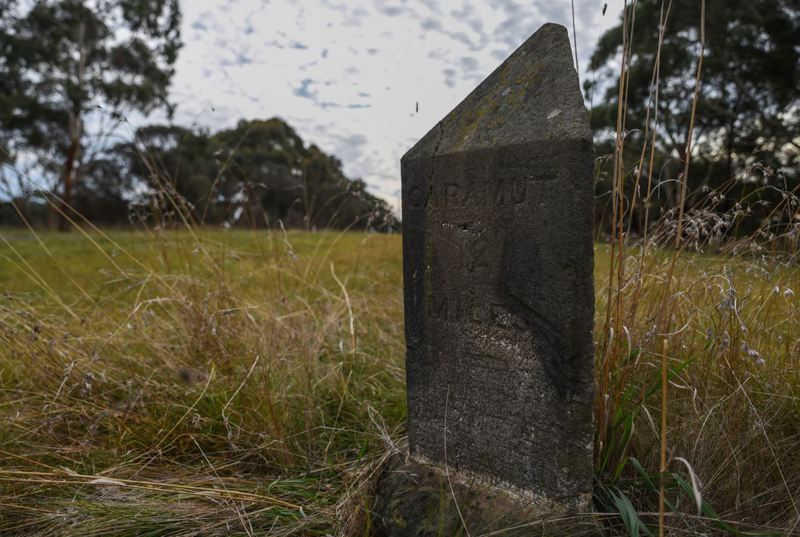
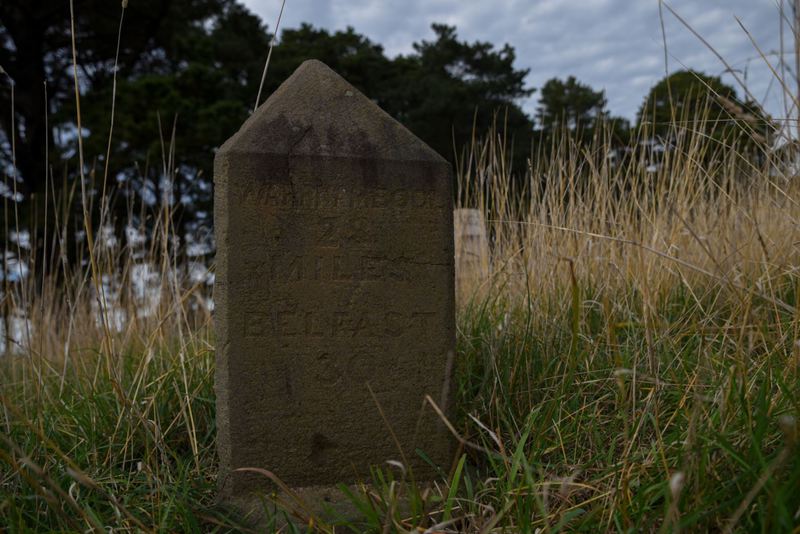
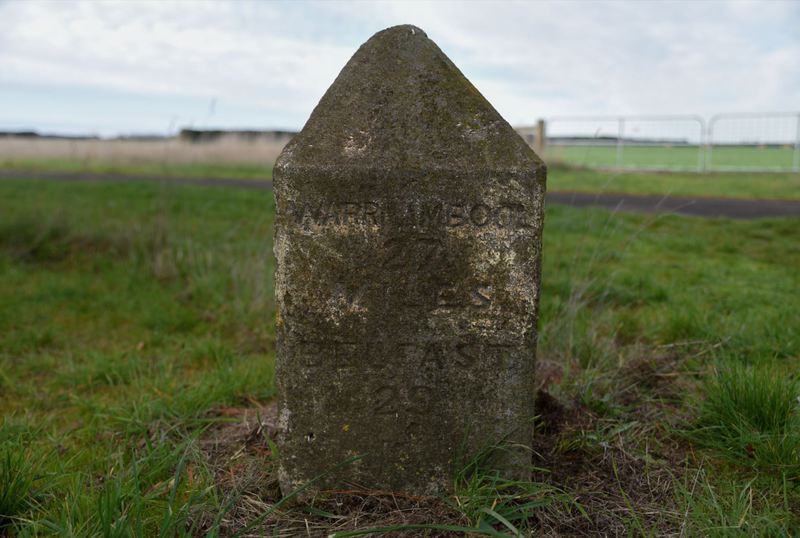
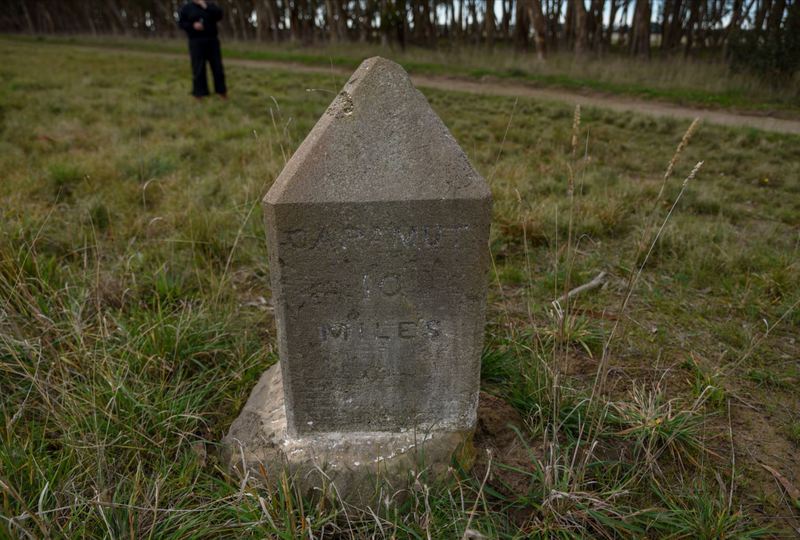
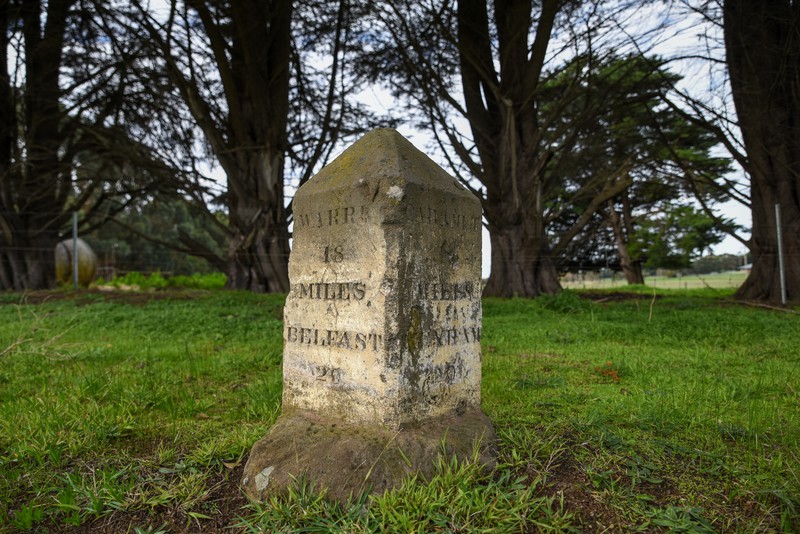
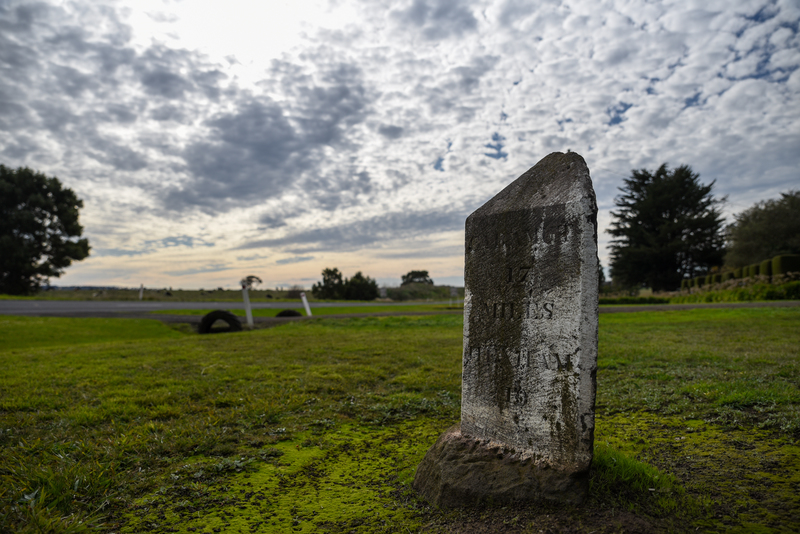
Statement of Significance
WHAT IS SIGNIFICANT?
The nine nineteenth-century basalt mileposts located along the Warrnambool-Caramut Road, on KeillorsRoad and within the property Wooriwest at 4014 Warrnambool-Caramut Road between the townships of Caramut and Woolsthorpe.
HOW IS IT SIGNIFICANT?
The Stone Mileposts- Warrnambool-Caramut Road are of historical significance to the State of Victoria.They satisfy the following criteria for inclusion in the Victorian Heritage Register.
- Criterion A Importance to the course, or pattern, of Victoria?s cultural history.
- Criterion B Possession of uncommon, rare or endangered aspects of Victoria?s cultural history.
- Criterion D Importance in demonstrating the principal characteristics of a class of cultural places and objects.
WHY IS IT SIGNIFICANT?
The Stone Mileposts - Warrnambool-Caramut Road are historically significant for their association with the development and use of the road transport system in Victoria in the mid-nineteenth century. Local shire ordistrict roads boards erected mileposts along popular roads to assist travelers with wayfinding and navigation. They were a necessity for coach travel between and beyond railway stations into remoter areas of Victoria. As a collection of mileposts, they allow the use of the road network in mid-nineteenth century Victoria to be better understood than most other places or objects with the same association. The fine design and solid construction of the Warrnambool-Caramut Road mileposts represent the economic prosperity of Western districts pastoralists in the era. They are an evocative reminder of the experience of road travel in rural Victoria in the mid-nineteenth century. (Criterion A)
The Stone Mileposts- Warrnambool-Caramut Road are historically significant for their association with the preparations in Victoria for a potential land invasion during World War II. After the fall of Pearl Harbour in 1942, the mileposts were buried to limit navigation and wayfinding information available to a potential invading force. Some mileposts were subsequently re-erected following the war. (Criterion A)
The Stone Mileposts - Warrnambool-Caramut Road are significant as a rare surviving example of a group of stone mileposts from the mid-nineteenth century. Stone mileposts were once common throughout western Victoria but were gradually replaced by cast iron and cast concrete alternatives, or otherwise lost or damaged. Although there are other individual examples of stone mileposts, there are few examples of roads that retain multiple mileposts. As a collection of nine stone mileposts, the Warrnambool-Caramut Road mileposts are extremely rare within Victoria (Criterion B).
The Stone Mileposts - Warrnambool-Caramut Road are a notable example of roadside mileposts. Demonstrating construction techniques and materials of the 1860s-70s, they encapsulate a key evolutionary phase in the development of the class. They are fine, being substantial, highly visible and demonstrating the skill of the stonemason's craft in their finely dressed stone and precise lettering. The location of the mileposts allows the role of the class to be easily understood. (Criterion D)
-
-
STONE MILEPOSTS - WARNNAMBOOL-CARAMUT ROAD - History
Victoria’s road network expanded following Victoria’s separation from New South Wales and the gold rushes of the 1850s. By the 1860s, shires or local district road boards were responsible for much of the road building and maintenance in Victoria. These bodies could levy rates from the local populace and tolls from road users to fund activities such road building. The Shire of Warrnambool was responsible for roads in the area including Woolsthorpe, Minjah and Caramut. It was a comparatively wealthy shire, reflecting the economic prosperity of Western District pastoralists and the roads of the region were renowned as some of the best in the colony of Victoria. In May 1864, the Victorian Roads & Bridges Office requested all shires and district road boards erect milestones along its major roads. While the railway had come to Geelong in 1857, and reached Hamilton in 1877, travel by coach was critical for travel between and beyond railway stations into more remote areas of western Victoria. It is likely that the mileposts date from the 1860s or 1870s. Many mileposts, including these, were removed or buried on Government order in preparation for a possible Japanese land invasion following the entry of Japan into World War II in 1942. Some mileposts were reerected after the war, while others have remained buried until recently. While the mileposts were initially unpainted, they were painted by the Country Roads Board toward the end of the twentieth century.STONE MILEPOSTS - WARNNAMBOOL-CARAMUT ROAD - Permit Exemptions
General Exemptions:General exemptions apply to all places and objects included in the Victorian Heritage Register (VHR). General exemptions have been designed to allow everyday activities, maintenance and changes to your property, which don’t harm its cultural heritage significance, to proceed without the need to obtain approvals under the Heritage Act 2017.Places of worship: In some circumstances, you can alter a place of worship to accommodate religious practices without a permit, but you must notify the Executive Director of Heritage Victoria before you start the works or activities at least 20 business days before the works or activities are to commence.Subdivision/consolidation: Permit exemptions exist for some subdivisions and consolidations. If the subdivision or consolidation is in accordance with a planning permit granted under Part 4 of the Planning and Environment Act 1987 and the application for the planning permit was referred to the Executive Director of Heritage Victoria as a determining referral authority, a permit is not required.Specific exemptions may also apply to your registered place or object. If applicable, these are listed below. Specific exemptions are tailored to the conservation and management needs of an individual registered place or object and set out works and activities that are exempt from the requirements of a permit. Specific exemptions prevail if they conflict with general exemptions. Find out more about heritage permit exemptions here.Specific Exemptions:INTRODUCTION TO PERMIT EXEMPTIONS
Preamble
The purpose of this information is to assist owners and other interested parties when considering or making
decisions regarding works to a registered place. It is recommended that any proposed works be discussed
with an officer of Heritage Victoria prior to making a permit application. Discussing proposed works will
assist in answering questions the owner may have and aid any decisions regarding works to the place.
The extent of registration of the Stone Mileposts – Warrnambool-Caramut Road in the Victorian Heritage
Register affects the whole place shown on Diagram 1700 including the mileposts and their foundations,
land, roads and verges, trees, landscape elements and other features. Under the Heritage Act 2017 a
person must not remove or demolish, damage or despoil, develop or alter or excavate, relocate or disturb
the position of any part of a registered place or object without approval. It is acknowledged, however, that
alterations and other works may be required to keep places and objects in good repair and adapt them for
use into the future.
If a person wishes to undertake works or activities in relation to a registered place or registered object, they
must apply to the Executive Director, Heritage Victoria for a permit. The purpose of a permit is to enable
appropriate change to a place and to effectively manage adverse impacts on the cultural heritage
significance of a place as a consequence of change. If an owner is uncertain whether a heritage permit is
required, it is recommended that Heritage Victoria be contacted.
Permits are required for anything which alters the place or object, unless a permit exemption is granted.
Permit exemptions usually cover routine maintenance and upkeep issues faced by owners as well as minor
works or works to the elements of the place or object that are not significant. They may include appropriate
works that are specified in a conservation management plan. Permit exemptions can be granted at the time
of registration (under s.38 of the Heritage Act) or after registration (under s.92 of the Heritage Act). It should
be noted that the addition of new buildings to the registered place, as well as alterations to the interior and
exterior of existing buildings requires a permit, unless a specific permit exemption is granted.
Disrepair of registered place or registered object
Under s.152 of the Act, the owner of a registered place or registered object must not allow that place or
object to fall into disrepair.
Failure to maintain registered place or registered object
Under s.153 of the Act, the owner of a registered place or registered object must not fail to maintain that
place or object to the extent that its conservation is threatened.
Conservation management plans
It is recommended that a Conservation Management Plan is developed to manage the place in a manner
which respects its cultural heritage significance.
Aboriginal cultural heritage
If works are proposed which have the potential to disturb or have an impact on Aboriginal cultural heritage it
is necessary to contact Aboriginal Victoria to ascertain any requirements under the Aboriginal Heritage Act
2006. If any Aboriginal cultural heritage is discovered or exposed at any time it is necessary to immediately
contact Aboriginal Victoria to ascertain requirements under the Aboriginal Heritage Act 2006.
Other approvals
Please be aware that approval from other authorities (such as local government) may be required to
undertake works.
Archaeology
There is not identified archaeology of state level significance at the place.
Cultural heritage significance
Overview of significance
The cultural heritage significance of the Stone Mileposts – Warrnambool-Caramut Road lies in the physical
fabric of the mileposts themselves. For the mileposts within the road reserve of the Warrnambool-Caramut
Road the cultural heritage significance also lies in their location and relationship to the road.
CATEGORIES OF WORKS OR ACTIVITIES (PERMIT EXEMPTIONS)
RECOMMENDED UNDER S.38
Notes
• All works should ideally be informed by a Conservation Management Plan prepared for the place. The
Executive Director is not bound by any Conservation Management Plan, and permits still must be
obtained for works suggested in any Conservation Management Plan.
• Nothing in this determination prevents the Heritage Council from amending or rescinding all or any of
the permit exemptions.
• Nothing in this determination exempts owners or their agents from the responsibility to seek relevant
planning or building permits where applicable.
General Conditions
• All exempted alterations are to be planned and carried out in a manner which prevents damage to the
fabric of the registered place.
• Should it become apparent during further inspection or the carrying out of works that original or
previously hidden or inaccessible details of the place are revealed which relate to the significance of the
place, then the exemption covering such works must cease and Heritage Victoria must be notified as
soon as possible.
Specific Permit Exemptions
Road maintenance
• Maintenance and repair works to existing roadways, shoulders and verges including works to the
road surface, kerbs and channels, road line marking and drains.
• Maintenance and repair of safety critical infrastructure including barriers of all types.
• Maintenance to or removal of existing underground and overhead utilities.
• Repair and maintenance of light masts and road signs.
• Removal or replacement of existing signage provided the size, location and material remains the
same.
Temporary structures
• The installation and/or erection of temporary elements associated with road works for a maximum
period of six months after which time they must be removed and any affected areas of the place
made good to match the condition of the place prior to installation. This includes:
o Temporary protective barriers surrounding the milepost during roadworks for a period no longer
than six months.
o Temporary security fencing, scaffolding, hoardings or surveillance systems to prevent
unauthorised access, or to secure public safety.
o Temporary built or mobile structures such as portable toilets.
o Temporary infrastructure, including wayfinding/directional/instructional signage, lighting, public
address systems, and the like in support of roadworks which do not require fixing into the
ground within 10 metres of the milepost.
Landscape
• The processes of landscape and garden maintenance including slashing, mowing, weeding, planting
and pruning.
• Installation of physical barriers or traps to enable vegetation protection and management of vermin
such as rats, mice and possums.
• Like for like repair and maintenance of driveways where the location is unchanged.
• Removal of tree seedlings and suckers without the use of herbicides.
• Management and maintenance of trees including formative and remedial pruning, removal of
deadwood and pest and disease control.
• Emergency tree works to maintain public safety.
• Removal of environmental and noxious weeds in a manner which does not disturb the foundations
of the mileposts.
• Fire suppression and firefighting activities such as fuel reduction burns and fire control line
construction, provided all heritage features and values of the place are identified and protected.
Working agricultural properties
• The continuation of existing agricultural practices including management of livestock, grazing,
cultivation, cropping and other processes necessary for usual agricultural operation.
-
-
-
-
-
Former Caramut North Homestead
 National Trust
National Trust -
Minjah Homestead
 National Trust
National Trust -
Goodwood Homestead
 National Trust
National Trust
-
'Boonderoo', House and Outbuildings
 Greater Bendigo City
Greater Bendigo City -
'Riverslea' house
 Greater Bendigo City
Greater Bendigo City -
1 Adam Street
 Yarra City
Yarra City
-
-








